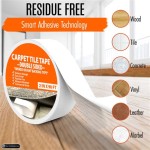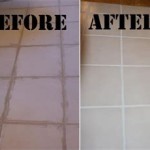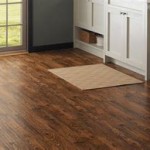How To Install Tongue And Groove Flooring On Concrete Slab
Installing tongue and groove flooring on a concrete slab presents a unique set of challenges due to the inherent rigidity and potential for moisture issues. However, with proper preparation and careful execution, it is a project achievable for DIY enthusiasts. This article outlines the necessary steps to ensure a successful installation.
Preparing the Concrete Slab
The foundation for a successful tongue and groove flooring installation lies in the preparation of the concrete slab. This step involves ensuring the surface is level, clean, and free from moisture.
First, the concrete slab must be level. Significant unevenness will lead to an uneven floor, causing problems with the flooring's appearance and potentially damaging the planks. A leveling compound can be used to address minor imperfections. For larger discrepancies, it may be necessary to re-pour the concrete slab. After leveling, the slab should be thoroughly cleaned to remove dirt, debris, and any existing coatings. Additionally, check for cracks or other damage and address them accordingly.
Moisture is the biggest enemy of wood flooring. Concrete slabs can naturally emit moisture, potentially leading to warping and damage to the flooring. To prevent this, it is essential to use a moisture barrier. This can be achieved using a moisture-resistant underlayment or a vapor barrier membrane. The chosen option should be installed directly on the concrete slab and allowed to cure properly before proceeding with the flooring installation.
Choosing the Right Flooring
Selecting the right tongue and groove flooring is crucial for a successful installation. Consider the following factors when choosing your flooring:
Species:
Different wood species offer unique characteristics. For example, oak is known for its durability, while pine is softer and more affordable. Consider the intended use of the space and desired aesthetic when choosing a species.Thickness:
Thicker planks provide greater stability and can help mask minor imperfections in the subfloor. However, they also require a more substantial subfloor structure.Finish:
Prefinished flooring offers convenience as it comes with a factory-applied finish. However, unfinished planks provide more flexibility in customizing the final look.Installation Method:
Tongue and groove flooring can be installed in several ways, including nailing, stapling, or using a floating system. Choose a method compatible with your subfloor and desired final result.Installing the Tongue and Groove Flooring
Once the slab is prepared and the flooring chosen, the installation process can begin. The following steps provide a general guide for installing tongue and groove flooring on a concrete slab:
1.
Lay the First Row:
Begin by laying the first row of planks along the wall, leaving a small expansion gap (typically 1/4 inch) between the planks and the wall. This space allows for expansion and contraction of the wood due to temperature and humidity changes.2.
Secure the Planks:
Depending on the chosen installation method, you may need to nail, staple, or use a floating system to secure the planks. Follow the manufacturer's instructions carefully for the specific flooring product.3.
Install Subsequent Rows:
Install subsequent rows by interlocking the tongue and groove joints. Make sure the seams between planks are staggered for a more aesthetically pleasing and structurally sound floor.4.
Cut for Corners and Obstacles:
Carefully measure and cut planks to fit around corners, doorways, or any other obstacles in the space.5.
Finish the Installation:
Once all the planks are installed, you may need to trim any excess planks along the walls and install transition strips to connect the flooring to other surfaces.Remember to work slowly and carefully, ensuring each plank is flush and properly connected. Use a tapping block and mallet to gently seat the planks into place and avoid damage.
Protecting the Flooring
After installation, it is essential to protect the tongue and groove flooring from damage and wear and tear. This includes:
Furniture Protection:
Use furniture pads or protectors to prevent scratches and dents from furniture legs.
Regular Cleaning:
Clean the floor regularly to remove dirt and debris that can cause scratches and wear. Use a soft-bristled broom or vacuum cleaner with a brush attachment. Avoid using harsh chemicals or abrasive cleaners.
Moisture Control:
Prevent moisture damage by ensuring adequate ventilation and using area rugs in high-traffic areas.By following these guidelines, you can enjoy your new tongue and groove flooring for years to come.

How To Install Tongue Groove Hardwood Floors Over Concrete

Q A Solid Wood Floors Over Concrete Slabs Jlc

Tongue Groove Flooring Installation On Underlay Start To Finish

How To Install A Wood Subfloor Over Concrete Rona

How To Install A Glue Down Floor Diy Flooring

Installing Engineered Hardwood On Concrete Villagio Guide

5 Essential Tips For Tongue And Groove Flooring District Floor

Fitting Hardwood Floor To Concrete Wood And Beyond Blog

How To Install Engineered Wood Flooring On Concrete

How To Install Tongue And Groove Flooring Blog
See Also







